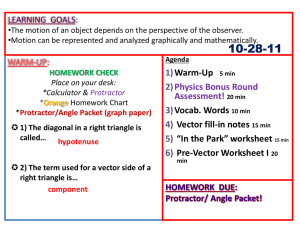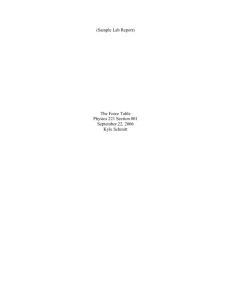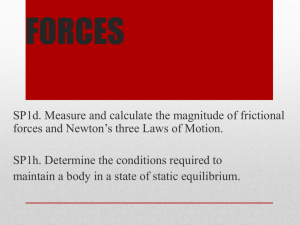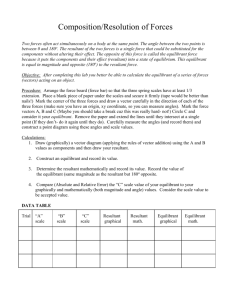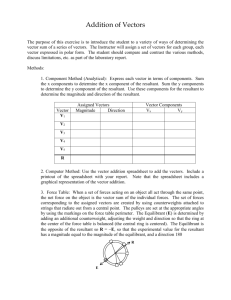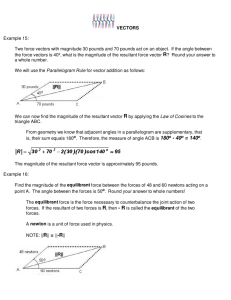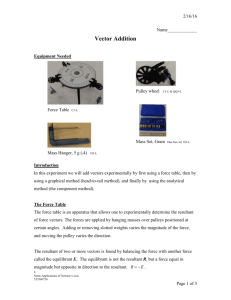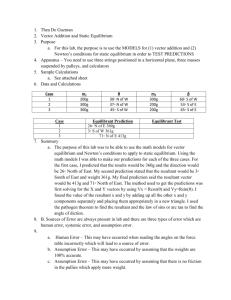Force Table Activity
advertisement
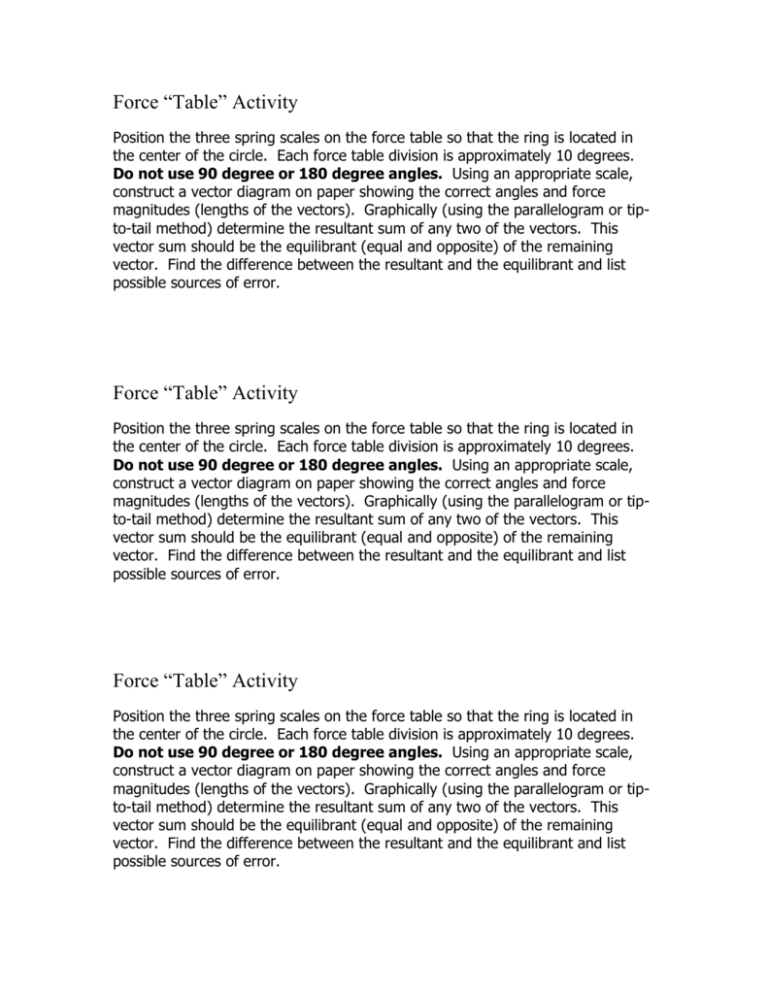
Force “Table” Activity Position the three spring scales on the force table so that the ring is located in the center of the circle. Each force table division is approximately 10 degrees. Do not use 90 degree or 180 degree angles. Using an appropriate scale, construct a vector diagram on paper showing the correct angles and force magnitudes (lengths of the vectors). Graphically (using the parallelogram or tipto-tail method) determine the resultant sum of any two of the vectors. This vector sum should be the equilibrant (equal and opposite) of the remaining vector. Find the difference between the resultant and the equilibrant and list possible sources of error. Force “Table” Activity Position the three spring scales on the force table so that the ring is located in the center of the circle. Each force table division is approximately 10 degrees. Do not use 90 degree or 180 degree angles. Using an appropriate scale, construct a vector diagram on paper showing the correct angles and force magnitudes (lengths of the vectors). Graphically (using the parallelogram or tipto-tail method) determine the resultant sum of any two of the vectors. This vector sum should be the equilibrant (equal and opposite) of the remaining vector. Find the difference between the resultant and the equilibrant and list possible sources of error. Force “Table” Activity Position the three spring scales on the force table so that the ring is located in the center of the circle. Each force table division is approximately 10 degrees. Do not use 90 degree or 180 degree angles. Using an appropriate scale, construct a vector diagram on paper showing the correct angles and force magnitudes (lengths of the vectors). Graphically (using the parallelogram or tipto-tail method) determine the resultant sum of any two of the vectors. This vector sum should be the equilibrant (equal and opposite) of the remaining vector. Find the difference between the resultant and the equilibrant and list possible sources of error.
